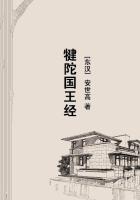5. The word gavelkind comes from Gabhail-eine , which denotes "accepted from the tribe." It refers therefore to thepartition among the members of the sept . This system of succession was in force as late as the time of James I. Sir JohnDavis, the attorney-general at the time, thus speaks of it at the commencement of the seventeenth century "Issint les terres de nature de gavelkind ne fueront partibles enter le prochen heires males de cesty qui morust seisie, mesenter touts les males de son sept en east manner. Le canfinny, ou chief del sept (this is the caput cognationis), fesait touteslea partitions per son discretion. Cest canfinny, apres le mort de chescun tertenant qua avait competent portion de terre,assemblait tout le sept, et aiant mis touts lour possessions en hotchpotch fesalt nouvel partition de tout: en quel partition ilne assignait a les fils de cesty que mourust le portion que lour pera avait; mes il allottait al chascun del sept solonque sonantiquity. Et issint per reason da ceux frequents partitions et ramovements on translations des tenants del un portion al antertouts les possessions fueront incertaines, et le uncertainty des possessions fuit la verey cause que nul civil habitation fueronterected, nul enclosure on improvement fult fait du terres." Davis, Reports, Le irish customs de Gavelkind . We can sea herethe struggle commencing between economic ideas and the archaic forms of property. Hotchpotch , the Flemish Utsepot , isthe Spanish Olla podrida , a mixture of various meats and vegetables.
CHAPTER IX.
AGRARIAN COMMUNITIES AMONG THE ARABS AND OTHERNATIONS.
The agrarian system of Algeria strongly resembles that of ancient Germany, because the Arabs have arrived at very much thesame point in economic evolution as the Germans had in the time of Tacitus.
We find a pastoral tribe, cultivating the soil subsidiarily, and on the threshold of the agricultural system. There is thisdifference, however, that the Arabs have remained at the same point from the commencement of history, while the Germanshave arrived at individual property and intensive cultivation. In Algeria the agrarian systems vary considerably. In Kabyliathe fields are marked out, and in many cases enclosed with hedges there are regular and very minute titles to property, whichmention even the number of trees of every kind comprised in the inheritance. In the oases planted with palm-trees we alsofind individual property. According to Mussulman theories the soil belongs to the sovereign, but in fact the eminent domainresides in the tribe. The portion of each family, mechetas , remains undivided between the members who cultivate it incommon and divide the produce. A partner may sell his share; but the other members of the family have the right of cheffa ,that is to say, of reclaiming the portion sold on tendering the price. This is the retrait-lignager formerly in force throughoutEurope, which is found in the village communities of every country. In certain tribes, especially in the Constantine district,the lands are re-divided annually by the sheik: in others, the families retain them, but without power of alienation. The landsare divided into lots called djebdas , corresponding to the area which a pair of oxen can till, that is to say from seven to tenhectares, or from seventeen to twenty-four acres. Mussulman jurisprudence recognises four classes of property, that of theState, blad-et-beylick; that of religious corporations, blad-et-habous; that of private individuals, blad-el-melk ; and finally thatof the communities, blad-el-djemâa . This last class of property corresponds to the German mark . (1)When the Arabs created the system of irrigation in Spain, they also established institutions of collective administration forthe distribution of the water, very similar to those which we find in the German mark for the administration of the forest.














